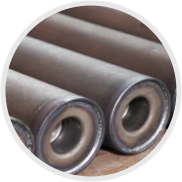 Afrikaans
Afrikaans  Albanian
Albanian  Amharic
Amharic  Arabic
Arabic  Armenian
Armenian  Azerbaijani
Azerbaijani  Basque
Basque  Belarusian
Belarusian  Bengali
Bengali  Bosnian
Bosnian  Bulgarian
Bulgarian  Catalan
Catalan  Cebuano
Cebuano  Corsican
Corsican  Croatian
Croatian  Czech
Czech  Danish
Danish  Dutch
Dutch  English
English  Esperanto
Esperanto  Estonian
Estonian  Finnish
Finnish  French
French  Frisian
Frisian  Galician
Galician  Georgian
Georgian  German
German  Greek
Greek  Gujarati
Gujarati  Haitian Creole
Haitian Creole  hausa
hausa  hawaiian
hawaiian  Hebrew
Hebrew  Hindi
Hindi  Miao
Miao  Hungarian
Hungarian  Icelandic
Icelandic  igbo
igbo  Indonesian
Indonesian  irish
irish  Italian
Italian  Japanese
Japanese  Javanese
Javanese  Kannada
Kannada  kazakh
kazakh  Khmer
Khmer  Rwandese
Rwandese  Korean
Korean  Kurdish
Kurdish  Kyrgyz
Kyrgyz  Lao
Lao  Latin
Latin  Latvian
Latvian  Lithuanian
Lithuanian  Luxembourgish
Luxembourgish  Macedonian
Macedonian  Malgashi
Malgashi  Malay
Malay  Malayalam
Malayalam  Maltese
Maltese  Maori
Maori  Marathi
Marathi  Mongolian
Mongolian  Myanmar
Myanmar  Nepali
Nepali  Norwegian
Norwegian  Norwegian
Norwegian  Occitan
Occitan  Pashto
Pashto  Persian
Persian  Polish
Polish  Portuguese
Portuguese  Punjabi
Punjabi  Romanian
Romanian  Russian
Russian  Samoan
Samoan  Scottish Gaelic
Scottish Gaelic  Serbian
Serbian  Sesotho
Sesotho  Shona
Shona  Sindhi
Sindhi  Sinhala
Sinhala  Slovak
Slovak  Slovenian
Slovenian  Somali
Somali  Spanish
Spanish  Sundanese
Sundanese  Swahili
Swahili  Swedish
Swedish  Tagalog
Tagalog  Tajik
Tajik  Tamil
Tamil  Tatar
Tatar  Telugu
Telugu  Thai
Thai  Turkish
Turkish  Turkmen
Turkmen  Ukrainian
Ukrainian  Urdu
Urdu  Uighur
Uighur  Uzbek
Uzbek  Vietnamese
Vietnamese  Welsh
Welsh  Bantu
Bantu  Yiddish
Yiddish  Yoruba
Yoruba  Zulu
Zulu conveyor pulley types
Understanding Conveyor Pulley Types
Conveyor systems are integral to various industries, facilitating the efficient movement of materials and goods. At the heart of these systems lies the conveyor pulley, a critical component that helps drive and redirect the conveyor belt. Understanding the different types of conveyor pulleys is essential for selecting the right configuration for specific applications, ensuring optimal performance and longevity of the system.
1. Drive Pulley
The drive pulley, often referred to as a motorized pulley, is a primary component in conveyor systems. It is responsible for moving the belt and is typically located at the loading end of the conveyor. This type of pulley is made from sturdy materials designed to withstand high torque and stresses. Drive pulleys can come with different surface textures, including smooth or rubberized finishes, depending on the specific requirements of the application. They are often equipped with a drive mechanism, such as a geared motor, to ensure consistent operation and drive the belt efficiently.
2. Idler Pulley
Idler pulleys are non-powered pulleys used to support and guide the conveyor belt. They are critical for maintaining belt tension and alignment, ensuring smooth operation throughout the system. Idler pulleys can vary in size and shape, with standard configurations including flat, troughing, and impact idlers. Flat idlers are typically used in simpler conveyor configurations, while troughing idlers are designed to support bulk materials, providing additional stability and minimizing spillage. Impact idlers are specifically designed to absorb the impact of heavy loads, protecting the belt and extending its life.
Return pulleys are located at the end of the conveyor system and are specifically designed to maintain belt tension as the material is transported back to the loading point. These pulleys have a vital role in ensuring that the conveyor belt remains properly positioned and that there is minimal wear and tear on the belt itself. Like idler pulleys, return pulleys are typically unpowered and work in conjunction with other pulleys to facilitate the continuous movement of the belt.
conveyor pulley types

4. Snub Pulley
A snub pulley is designed to increase the angle of wrap between the belt and the drive pulley, ensuring better grip and reducing slippage during operation. This pulley is often used in conjunction with the drive pulley to enhance the overall performance of the system, especially in high-tension applications. Snub pulleys can also be useful for redirecting the belt or providing additional support, improving the system's efficiency.
5. Take-Up Pulley
Take-up pulleys are used to adjust and maintain the tension of the conveyor belt. These pulleys are critical for ensuring that the belt operates smoothly and does not slip during operation. Take-up systems come in two main types manual and automatic. Manual take-up systems allow for manual adjustments, while automatic systems use tension sensors to dynamically adjust the belt tension, making them ideal for applications with varying loads.
6. Split Pulley
Split pulleys are engineered for easier maintenance and replacement. This unique design allows users to disassemble the pulley without removing the entire conveyor system, saving time and minimizing downtime. Split pulleys can be configured as drive or idler pulleys, offering flexibility in design and suitability for various materials and environments.
Conclusion
Selecting the appropriate type of conveyor pulley is crucial for ensuring a reliable, efficient, and cost-effective conveyor system. By understanding the specific roles and characteristics of drive, idler, return, snub, take-up, and split pulleys, operators can optimize their conveyor designs for particular materials and applications. Proper selection and maintenance of these pulleys not only enhance system performance but also extend the lifespan of the conveyor belt, leading to significant cost savings in the long run. As industries continue to evolve, so will the technology and innovations surrounding conveyor pulleys, ensuring their relevance and necessity in modern material handling processes.
-
Revolutionizing Conveyor Reliability with Advanced Rubber Lagging PulleysNewsJul.22,2025
-
Powering Precision and Durability with Expert Manufacturers of Conveyor ComponentsNewsJul.22,2025
-
Optimizing Conveyor Systems with Advanced Conveyor AccessoriesNewsJul.22,2025
-
Maximize Conveyor Efficiency with Quality Conveyor Idler PulleysNewsJul.22,2025
-
Future-Proof Your Conveyor System with High-Performance Polyurethane RollerNewsJul.22,2025
-
Driving Efficiency Forward with Quality Idlers and RollersNewsJul.22,2025





























